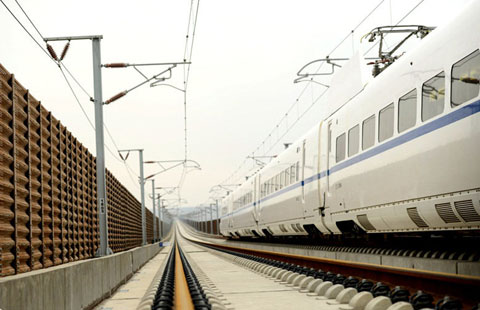Reforms to keep growth on right path
By Zheng Yangpeng and Mu Chen (China Daily) Updated: 2014-06-07 07:18
China should push ahead with fiscal and financial sector reforms amid three major downside risks, a World Bank report released on Friday said.
According to the Washington-based development bank, the main risk for China is "an abrupt deleveraging of local government debt that could trigger a sharp slowdown in investment growth."
The other risks include the sudden change in the cost of and access to capital in specific sectors that could result in significant reduction in economic activity.
The report specifically cited the real estate sector as a source for concern after home prices in major Chinese cities posted their first month-on-month drop in nearly two years in May.
Another worrisome factor is that the recovery in exports may not materialize if growth in advanced countries weakens further, it said.
China is likely to post annual economic growth of 7.6 percent this year and 7.5 percent next year, the World Bank said.
On Thursday, the International Monetary Fund retained its growth forecast of 7.5 percent for this year but lowered its growth projection to around 7 percent for 2015.
The World Bank figures, however, are the most optimistic among all international institutions. At the same time, it also noted that China's growth will moderate over the medium term as its economy gradually rebalances.
When asked to explain its optimism, Karlis Smits, senior economist at the World Bank and lead author of the China Economic Update, emphasized: "All growth targets are a baseline, which means the most likely scenario, but obviously there are downside risks.
"The risk is that if growth slips significantly below the government targets, the authorities will resort to the more accommodative, growth-supporting monetary and fiscal policy stances," Smits said. "To maintain China's traditional growth model, it has to rely on a government led investment financed by credit expansion."
The World Bank's report noted signs of a pickup in recent weeks, including the upturn in industrial production. This reflects robust consumption, a recovery of external demand, and the results of new growth-supporting measures by the government. This acceleration is likely to continue into the next two quarters, it said.
Chorching Goh, lead economist for China at the World Bank, recognized that it would be difficult for the government to roll out all the reforms simultaneously, and instead advocated a policy of prioritizing and sequencing the implementation of the proposed reforms.
Fiscal and financial reform could be a priority, the World Bank economists said.
"We've seen the liberalization of China's product market for the past three decades. I think that is not a coincidence with China's rapid export-driven growth," said Goh. "Today, what is very important for China to realize is that it needs to liberalize its factor markets, especially markets like land, labor and capital."
The bank has consistently called for liberalization of China's factor market, and said the fragmentation of land, labor and capital markets within the nation are the major reasons behind price distortions that lead to wasteful lending, sprawling urban areas, labor market rigidity and other malaises.
"Delays in implementing coherent reforms could perpetuate resource misallocation, undermine the health of the banking system, threaten the debt sustainability of local governments, and increase the fiscal costs of reforms," the report said.
Contact the writers at zhengyangpeng@chinadaily.com.cn and muchen@chinadaily.com.cn
(China Daily 06/07/2014 page9)
- US opens patent probe into toner cartridges
- Luxgen U6 crossover gets 6,500 pre-orders
- Box office fraud shadows China's film market
- Int'l Auto Industry Fair kicks off in Chongqing
- Firm says it abused market position
- US approves anti-dumping probe of dry containers from China
- Super-rich look abroad in record numbers
- Li wants more local action to boost economic growth

















